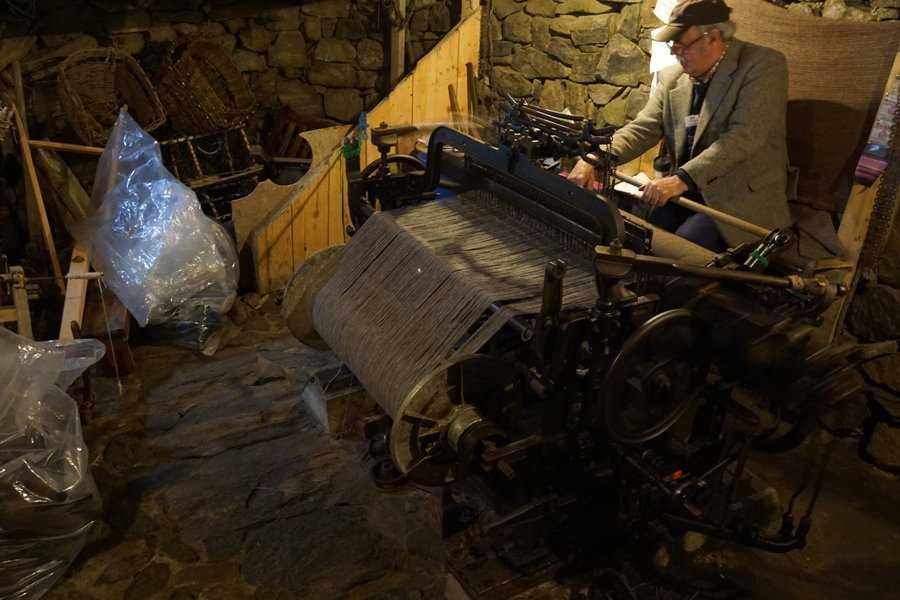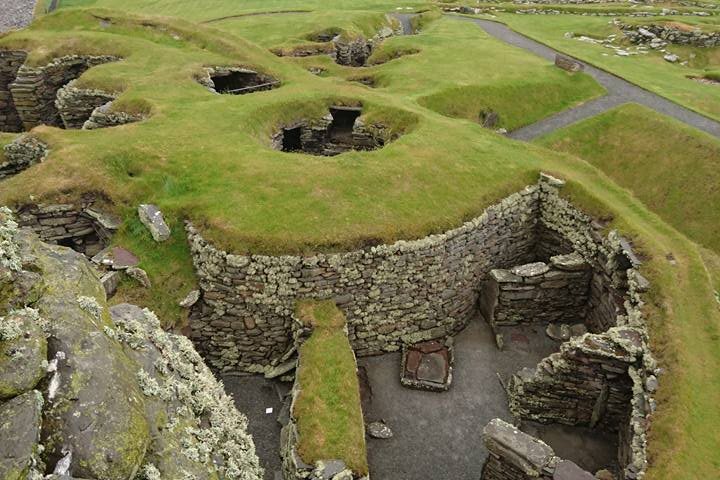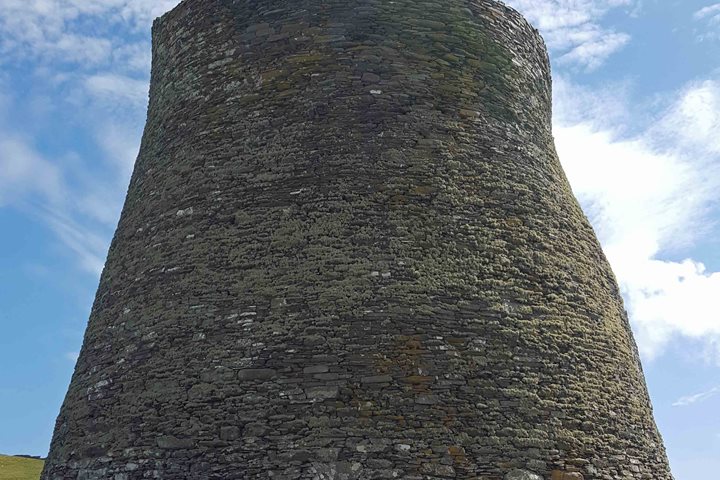We were blessed with a very signature Scottish morning as National Geographic Orion pulled alongside the dock in Stornoway, the largest town that resides in the Outer Hebrides. Ready to brave the elements, we boarded the coaches that would take us to some of the most significant archeological sites in the entire region.
Arriving in the district of Carloway, we were introduced to what life was like inside of a traditional “black house.” We could smell the burning peat from the outside, and upon entering the house it became obvious why they are known as black houses. The lack of chimneys gives no escape for the smoke, painting the walls black and leaving a permanent aroma of the land. In the other room, we were privileged to able to watch a working loom operator weaving some infamous Harris Tweed.
A short distance away, we found ourselves at the Dun Carloway Broch, the best preserved broch in the Outer Hebrides. Standing at up to nine meters tall, it is thought to have been built in the first century AD as a defensive residence and remained in use for many centuries.
The end of our excursion brought us to the most celebrated of the ancient monuments, the magnificent Standing Stones of Callanish. The stones were erected in the late Neolithic era over 5000 years ago, making the site even older than Stonehenge. Their true purpose is unknown, although it is believed that the stones were placed in a more lunar orientation. Walking amongst them only brought about more awe and wonder as to what the real nature of their purpose was when they were placed.
Once back on board the ship, we heard a fascinating talk about the history of Christianity in the region by our historian, David Barnes. We then heard about seabird ecology from our naturalist, Ciernan Cronin. The rest of the afternoon was spent on the ship, traversing very calm seas into the evening.







